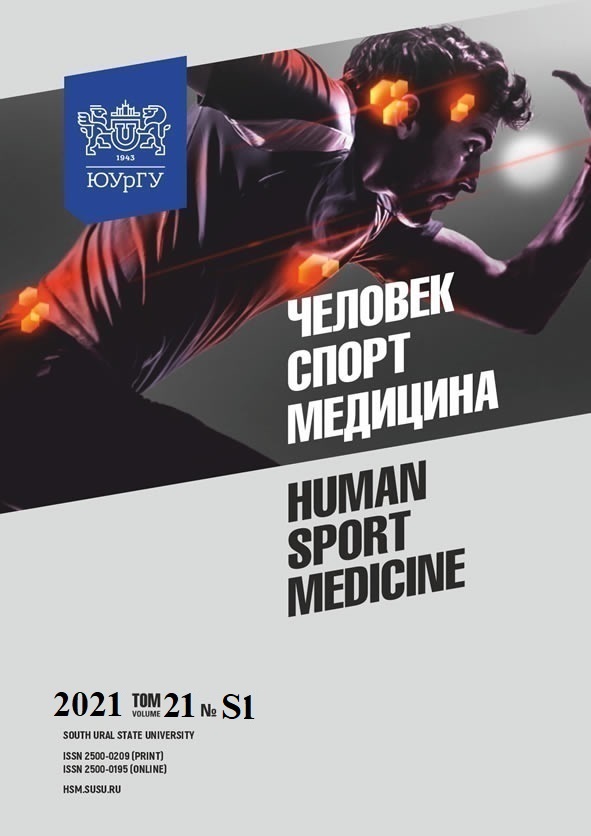POLYMORPHISM OF GENES OF THE RENIN-ANGIOTENSIN SYSTEM AND HEMOSTASIS IN ADOLESCENTS IN DIFFERENT SPORTS
Abstract
Aim. The article aims to identify the distribution of frequency of the genotypes of the renin-angiotensin system and hemostasis in adolescent athletes in different sports. Materials and methods. 110 boys and 94 girls with an average age of 15 ± 1.6 years participated in the study based on informed consent. Venous blood sampling was performed in EDTA vacuettes without stabilizer. The profile of genes was determined by polymerase chain reaction (PCR) on the DTprime apparatus at the Center for Laboratory Diagnostics. Genes encoding angiotensin converting enzyme (ACE), angiotensinogen protein (AGT), methylenetetrahydrofolate reductase protein (MTHFR), and angiotensinogen II receptor protein (AGT2R1) were considered as candidates for the renin-angiotensin system and hemostasis. The distribution of genotypes was assessed without taking into account the gender of the subjects. The SPSS system version 23.0 (descriptive statistics, Fisher's F test) was used for statistical processing of the results. Results. Analysis of the distribution of ACE genotypes (Alu I/D), AGT 704 T > C, PPARG C1A1444G > A, SERPINE PAI1, MTHFR showed that polymorphic variants predominate in athletes (49–59% of cases). Genes PPARA2528G > C, PPARDT (–87) C are represented mainly by dominant variants with polymorphic variants in the range from 32 to 25%. The analysis of the factor 5 Leiden (F5) and prothrombin (F2) genes, whose polymorphism is associated with high mortality from thromboembolism, did not reveal polymorphic variants. Conclusion. For adolescent athletes with genotypes AGT 704 T > C T/C, ACE (Alu I/D) I/D, CALCRT (1340C) T/T high intensity exercise training for the ligamentous apparatus and intensive stretching are not recommended; in the presence of F5 G/G, F2 G/G, SERPINE PAI14G/4G, MTHFR C/C professional sports are contraindicated, physical training is possible only under medical supervision.
References
References on translit
Copyright (c) 2021 Human. Sport. Medicine

This work is licensed under a Creative Commons Attribution-NonCommercial-NoDerivatives 4.0 International License.















